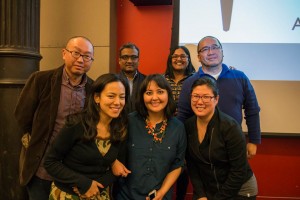 Taken from the Paradise Isle: The Hoshida Family Story, edited by Heidi Kim and with a foreword by Franklin Odo, was released in July 2015 from the University Press of Colorado.
Taken from the Paradise Isle: The Hoshida Family Story, edited by Heidi Kim and with a foreword by Franklin Odo, was released in July 2015 from the University Press of Colorado.
Crafted from George Hoshida’s diary and memoir, as well as letters faithfully exchanged with his wife Tamae, Taken from the Paradise Isle is an intimate account of the anger, resignation, philosophy, optimism, and love with which the Hoshida family endured their separation and incarceration during World War II. The volume includes historical footnotes and contextualization as well as government documents detailing the behind-the-scenes handling of the cases of George, Tamae, and others from Hawaii.
It has been a privilege to work with the family and community to bring this important story to publication at long last, decades after George put it together.
MEDIA
WUNC Radio: Prof. Kim speaks with host Frank Stasio on “The State of Things.”
An email Q&A on the Discover Nikkei webpage.
In the video below taken at a public event at Hunter College CUNY, Prof. Kim speaks about the Hoshidas at 1h 33′.
Downloadable press promotional flyer: Kim_ParadiseIsle_Flyer
Review links may be found at the UP Colorado page for the book.
 Heidi Kim’s essay “Incarceration, Cafeteria Style,” about the politics of proper eating during the Japanese American incarceration, appears in the first ever Asian American food studies reader, Eating Asian America, released in fall 2013 from NYU Press. See the book’s Amazon page
Heidi Kim’s essay “Incarceration, Cafeteria Style,” about the politics of proper eating during the Japanese American incarceration, appears in the first ever Asian American food studies reader, Eating Asian America, released in fall 2013 from NYU Press. See the book’s Amazon page 


